-
 Bitcoin
Bitcoin $115200
-2.68% -
 Ethereum
Ethereum $3601
-5.16% -
 XRP
XRP $3.035
-2.96% -
 Tether USDt
Tether USDt $0.9997
-0.04% -
 BNB
BNB $764.5
-5.43% -
 Solana
Solana $168.1
-5.92% -
 USDC
USDC $0.9998
-0.02% -
 Dogecoin
Dogecoin $0.2090
-4.80% -
 TRON
TRON $0.3272
-0.49% -
 Cardano
Cardano $0.7306
-5.00% -
 Hyperliquid
Hyperliquid $39.16
-12.22% -
 Stellar
Stellar $0.3967
-4.96% -
 Sui
Sui $3.566
-5.95% -
 Chainlink
Chainlink $16.55
-6.57% -
 Bitcoin Cash
Bitcoin Cash $552.3
-3.90% -
 Hedera
Hedera $0.2516
-4.69% -
 Avalanche
Avalanche $21.99
-5.75% -
 Toncoin
Toncoin $3.621
-0.28% -
 Ethena USDe
Ethena USDe $1.000
-0.03% -
 UNUS SED LEO
UNUS SED LEO $8.951
0.02% -
 Litecoin
Litecoin $105.9
-3.59% -
 Shiba Inu
Shiba Inu $0.00001232
-5.00% -
 Polkadot
Polkadot $3.640
-5.55% -
 Uniswap
Uniswap $9.048
-7.03% -
 Monero
Monero $301.8
-1.51% -
 Dai
Dai $0.9999
-0.01% -
 Bitget Token
Bitget Token $4.334
-3.66% -
 Pepe
Pepe $0.00001064
-6.17% -
 Cronos
Cronos $0.1367
-5.78% -
 Aave
Aave $259.2
-4.59%
Binance Staking tutorial: staking mining income calculation and withdrawal
Stake on Binance by logging in, choosing a product, and confirming the amount; calculate rewards using APY and withdraw them once earned.
Jun 08, 2025 at 02:01 am
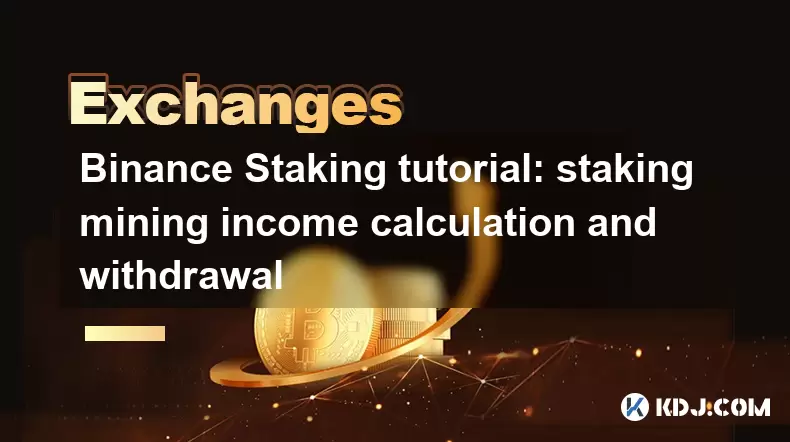
Introduction to Binance Staking
Binance Staking is a feature offered by Binance, one of the world's leading cryptocurrency exchanges, allowing users to earn passive income on their cryptocurrency holdings. By staking your cryptocurrencies, you can participate in the validation process of certain blockchain networks and receive rewards in return. This article provides a detailed tutorial on how to stake on Binance, calculate your mining income, and withdraw your earnings.
How to Stake on Binance
Staking on Binance is a straightforward process, but it requires you to follow a few steps meticulously. Here's how you can start staking on Binance:
- Log into your Binance account: Ensure you have a verified account on Binance.
- Navigate to the Staking section: From the main menu, select "Finance," then click on "Staking."
- Choose a staking product: Binance offers various staking products with different cryptocurrencies and terms. Select the one that suits your needs.
- Review the staking details: Before proceeding, review the staking duration, annual percentage yield (APY), and any lock-up periods.
- Enter the staking amount: Decide how much of the chosen cryptocurrency you want to stake and enter the amount.
- Confirm the staking transaction: Review all the details and confirm the transaction. Your funds will be locked in the staking product, and you'll start earning rewards.
Calculating Staking Mining Income
Understanding how to calculate your staking mining income is crucial for maximizing your returns. Here's a step-by-step guide to calculating your staking rewards:
- Identify the APY: The Annual Percentage Yield (APY) is the key factor in calculating your staking income. It's usually provided by Binance for each staking product.
- Determine the staking period: Know the duration for which you're staking your cryptocurrencies.
- Calculate the daily reward: To find the daily reward, use the formula: Daily Reward = (Staked Amount APY) / 365*.
- Calculate the total reward: Multiply the daily reward by the number of days you're staking to get the total reward.
For example, if you stake 1000 BNB with an APY of 10% for 30 days, your daily reward would be (1000 0.10) / 365 = 0.274 BNB. Over 30 days, your total reward would be 0.274 30 = 8.22 BNB.
Withdrawing Staking Rewards
Once you've earned your staking rewards, you'll want to know how to withdraw them. Here's how to do it on Binance:
- Navigate to the Staking section: Go to "Finance" and then "Staking" in the Binance menu.
- Find your staking product: Locate the staking product from which you want to withdraw rewards.
- Check the withdrawal availability: Ensure that the staking period has ended or that the product allows for partial withdrawals.
- Initiate the withdrawal: Click on the "Withdraw" or "Redeem" button next to your staking product.
- Enter the withdrawal amount: Specify how much of your rewards you want to withdraw.
- Confirm the withdrawal: Review the details and confirm the withdrawal. Your rewards will be transferred to your Binance spot wallet.
Understanding Staking Risks
While staking can be a lucrative way to earn passive income, it's important to understand the risks involved:
- Market risk: The value of the staked cryptocurrency can fluctuate, affecting the real value of your rewards.
- Lock-up periods: Some staking products have lock-up periods during which you cannot access your staked funds.
- Slashing risk: In some blockchain networks, validators can be penalized (slashed) for not performing their duties correctly, which could lead to a loss of staked funds.
Choosing the Right Staking Product
Selecting the right staking product is crucial for maximizing your returns and minimizing risks. Here are some factors to consider:
- APY: Higher APY can lead to higher returns, but be wary of products that offer unrealistically high yields.
- Duration: Consider how long you're willing to lock up your funds. Shorter durations offer more flexibility but might have lower APYs.
- Lock-up periods: Some products have lock-up periods that restrict access to your funds. Ensure this aligns with your investment strategy.
- Minimum and maximum staking amounts: Check if the product has minimum or maximum staking requirements that suit your investment size.
FAQs
Q1: Can I stake multiple cryptocurrencies on Binance at the same time?
Yes, you can stake multiple cryptocurrencies on Binance simultaneously. Each staking product operates independently, allowing you to diversify your staking portfolio across different cryptocurrencies and staking terms.
Q2: What happens if I unstake my cryptocurrencies before the staking period ends?
If you unstake your cryptocurrencies before the staking period ends, you might incur penalties or lose out on potential rewards. Some staking products allow for early unstaking with a penalty, while others may not allow it at all. Always check the terms of the staking product before proceeding.
Q3: How often are staking rewards distributed on Binance?
Staking rewards on Binance are typically distributed daily, but the exact frequency can vary depending on the staking product. Some products might distribute rewards weekly or at the end of the staking period. Always check the specific details of the staking product you're interested in.
Q4: Are there any fees associated with staking on Binance?
Binance does not charge any fees for staking, but you should be aware of potential network fees when transferring cryptocurrencies to and from your Binance account. Additionally, some staking products might have early withdrawal fees or penalties. Always review the terms and conditions of the staking product to understand any associated costs.
Disclaimer:info@kdj.com
The information provided is not trading advice. kdj.com does not assume any responsibility for any investments made based on the information provided in this article. Cryptocurrencies are highly volatile and it is highly recommended that you invest with caution after thorough research!
If you believe that the content used on this website infringes your copyright, please contact us immediately (info@kdj.com) and we will delete it promptly.
- Litecoin Price Watch: UNIL Pump & Staking Success Steal the Show?
- 2025-08-02 02:50:12
- Bitcoin, Crypto, Gambling Sites: 2025's Hottest Trends and Where to Bet
- 2025-08-02 02:50:12
- FTX Token's Wild Ride: FTT Drop Amidst Creditor Repayment Buzz
- 2025-08-02 01:30:12
- Navigating the Crypto Market: Bitcoin, Trader Experience, and Avoiding the Noise
- 2025-08-02 00:50:12
- Deep Agents, AI Task Management, and Evolution AI: A New Era?
- 2025-08-02 00:50:12
- AAVE Price Under Pressure: Technical Indicators Point to Bearish Momentum
- 2025-08-02 02:10:12
Related knowledge
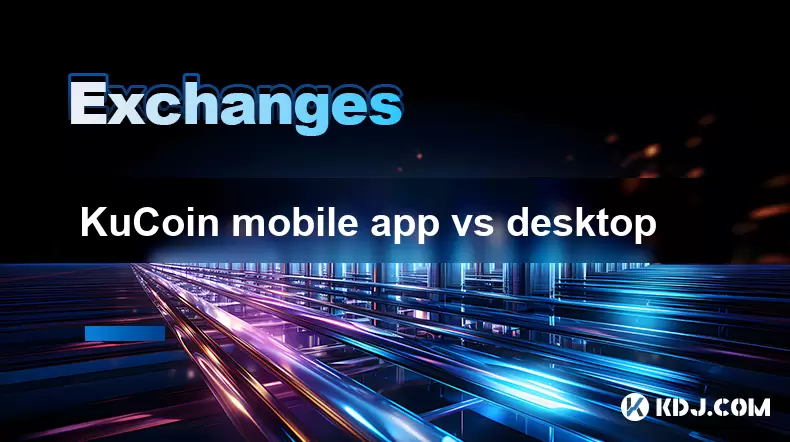
KuCoin mobile app vs desktop
Jul 19,2025 at 08:35am
Overview of KuCoin Mobile App and Desktop PlatformThe KuCoin ecosystem offers both a mobile app and a desktop platform, each designed to cater to diff...
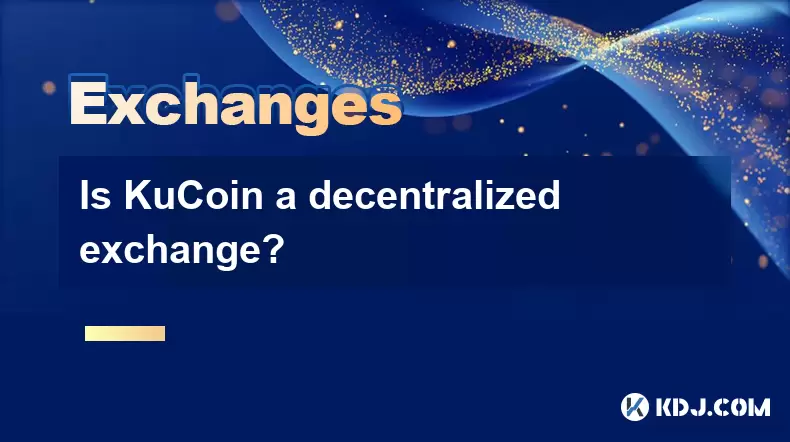
Is KuCoin a decentralized exchange?
Jul 18,2025 at 03:15pm
Understanding Decentralized Exchanges (DEXs)To determine whether KuCoin is a decentralized exchange, it's essential to first understand what defines a...
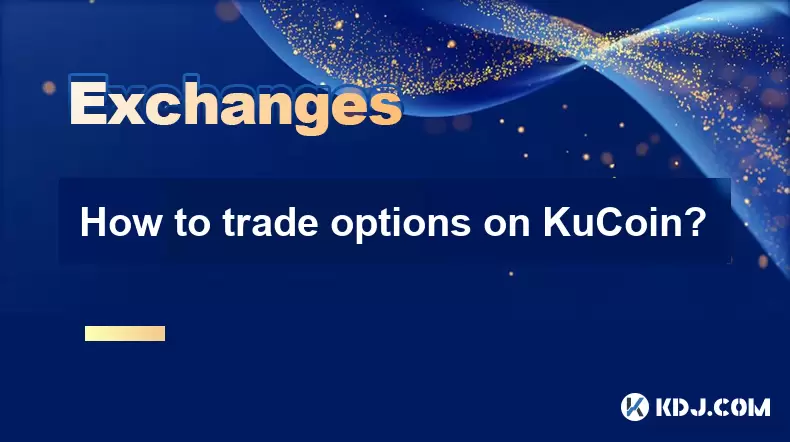
How to trade options on KuCoin?
Jul 19,2025 at 03:42am
Understanding Options Trading on KuCoinOptions trading on KuCoin allows users to speculate on the future price movements of cryptocurrencies without o...

What are KuCoin trading password rules?
Jul 20,2025 at 07:56am
Understanding the Purpose of a Trading Password on KuCoinOn KuCoin, a trading password serves as an additional layer of security beyond the standard l...
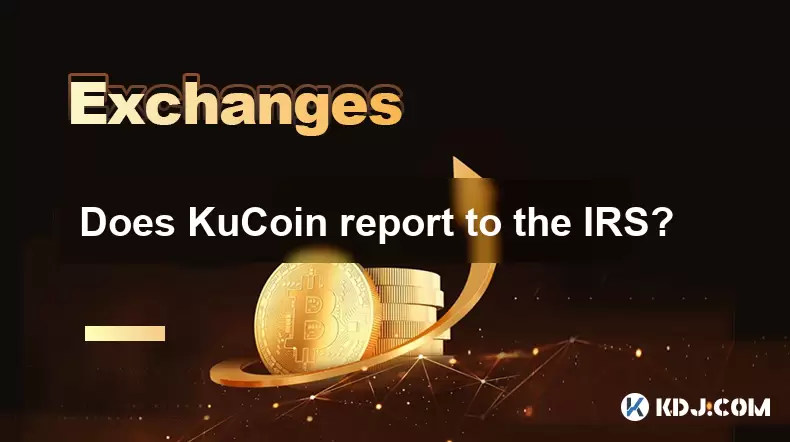
Does KuCoin report to the IRS?
Jul 27,2025 at 05:01am
Understanding the Reporting Obligations of KuCoinCryptocurrency exchanges are increasingly under scrutiny from global tax authorities, and KuCoin is n...

Who is the CEO of KuCoin?
Jul 20,2025 at 09:35am
Background of KuCoinKuCoin is one of the largest cryptocurrency exchanges globally, known for its diverse range of trading pairs and user-friendly int...

KuCoin mobile app vs desktop
Jul 19,2025 at 08:35am
Overview of KuCoin Mobile App and Desktop PlatformThe KuCoin ecosystem offers both a mobile app and a desktop platform, each designed to cater to diff...

Is KuCoin a decentralized exchange?
Jul 18,2025 at 03:15pm
Understanding Decentralized Exchanges (DEXs)To determine whether KuCoin is a decentralized exchange, it's essential to first understand what defines a...

How to trade options on KuCoin?
Jul 19,2025 at 03:42am
Understanding Options Trading on KuCoinOptions trading on KuCoin allows users to speculate on the future price movements of cryptocurrencies without o...

What are KuCoin trading password rules?
Jul 20,2025 at 07:56am
Understanding the Purpose of a Trading Password on KuCoinOn KuCoin, a trading password serves as an additional layer of security beyond the standard l...

Does KuCoin report to the IRS?
Jul 27,2025 at 05:01am
Understanding the Reporting Obligations of KuCoinCryptocurrency exchanges are increasingly under scrutiny from global tax authorities, and KuCoin is n...

Who is the CEO of KuCoin?
Jul 20,2025 at 09:35am
Background of KuCoinKuCoin is one of the largest cryptocurrency exchanges globally, known for its diverse range of trading pairs and user-friendly int...
See all articles

























































































